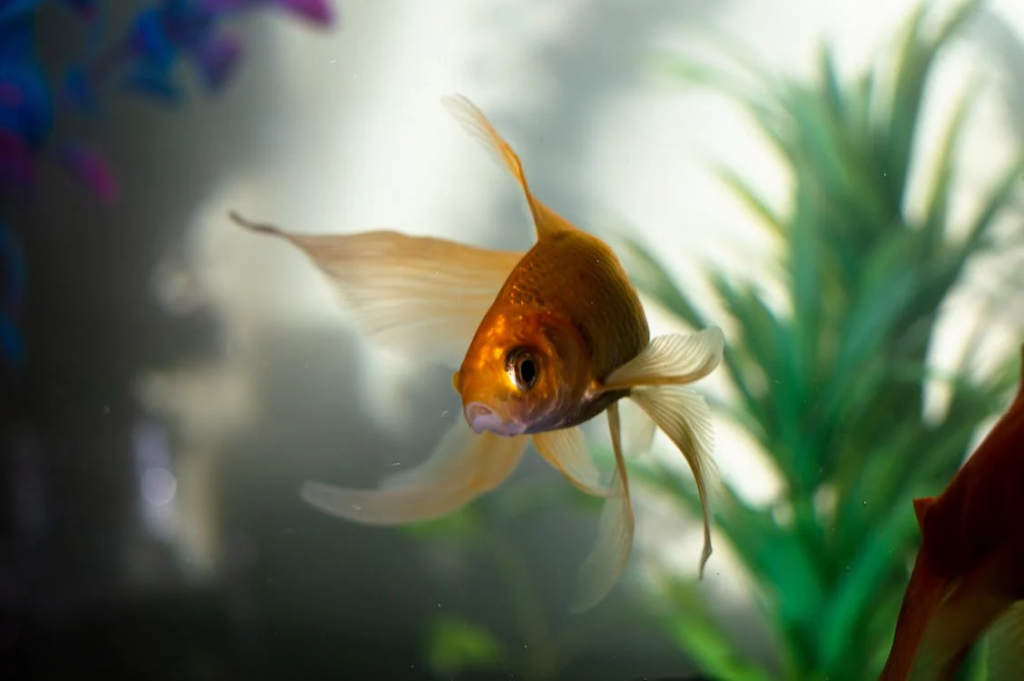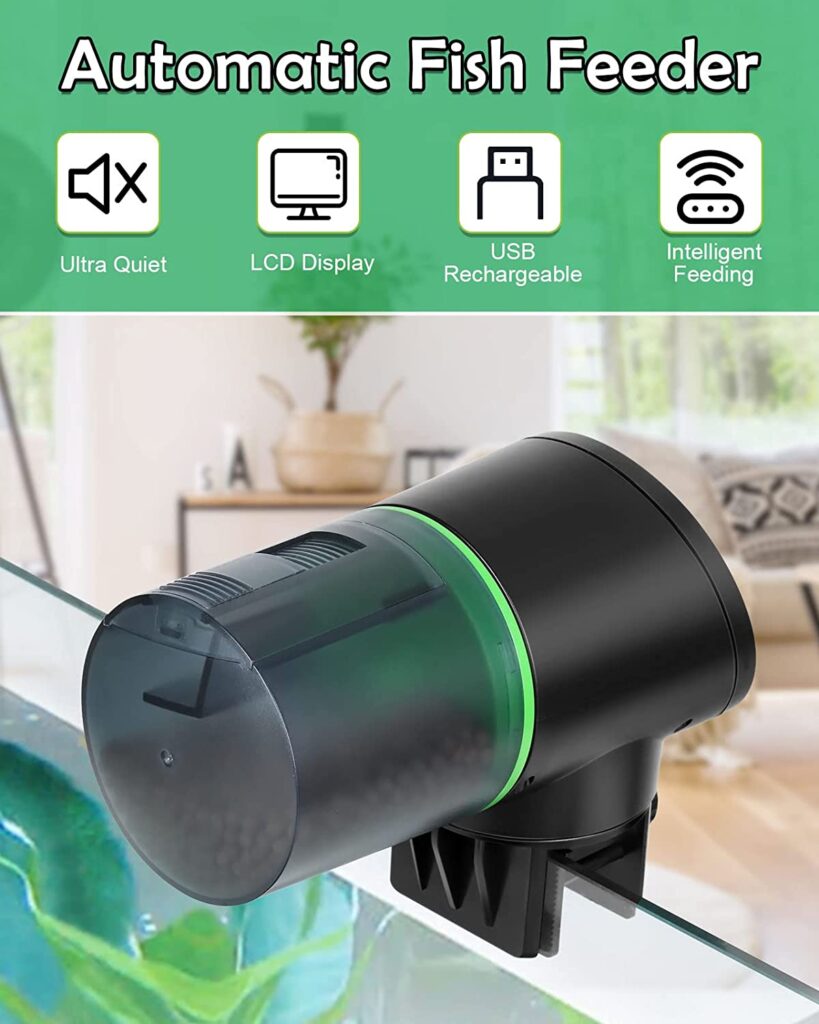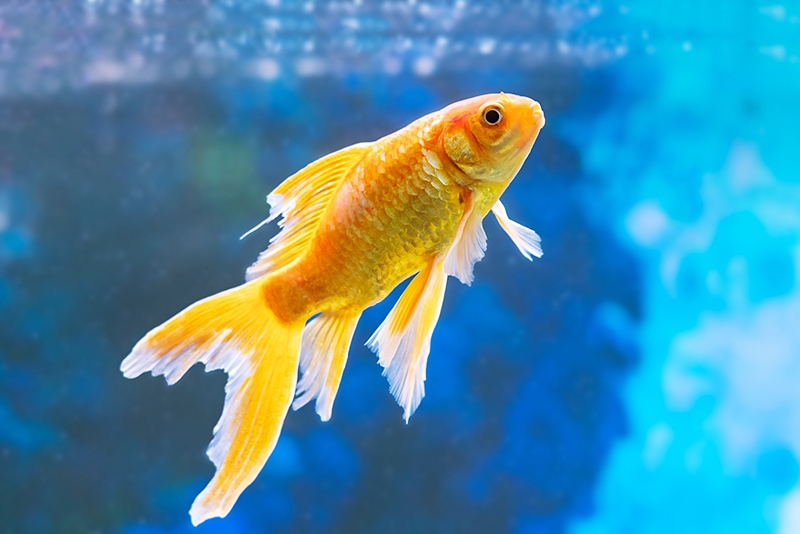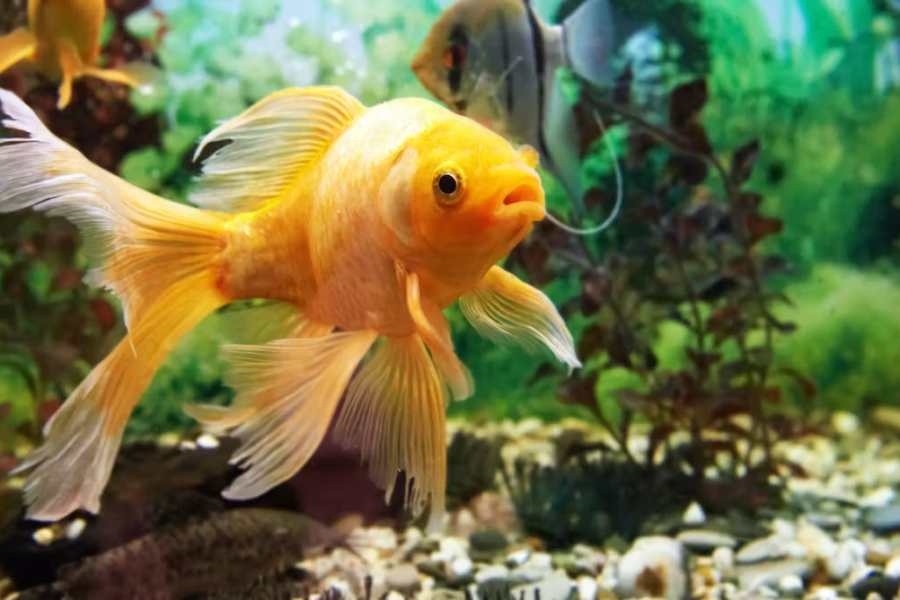
Welcome to the world of automatic fish feeders – a realm that allows even the most forgetful fish parents to sleep in. We’re going to explore the weird and wonderful, diving deep into the realms of Gravity Feeders, Electronic Feeders, and the high-flying Smart Feeders.
Buckle up because we’re not just stopping at what they are. Oh no, we’re all about maximum information here. We’re going to delve into the benefits, drawbacks, and best practices for each type, and even showcase some popular models. Then we’ll move onto key features to look for in your quest for the perfect automatic fish feeder. Lastly, a splash of final advice to help you choose the right feeder, keep it maintained, and maximize its usefulness. Ready to dive in?
Gravity Feeders

Welcome to the wonderful world of automatic fish feeders! Let’s dive in – pun intended! First up, we’re talking about gravity feeders.
The Concept Behind Their Operation
Simply put, gravity feeders utilize the force of, well, gravity! These devices release food over time as it naturally falls down. Imagine a candy dispenser, but for fish food.
Benefits and Drawbacks
On the positive side, gravity feeders are easy to use and affordable. Great for fish novices! On the flip side, they can over or underfeed if not properly set up. Also, moisture might seep into the food compartment, causing the food to clump.
Best Practices for Using Gravity Feeders
Don’t let the cons scare you! Most of these problems can be avoided. Install the feeder right, check the food flow, and ensure the housing is tight but breathable to avoid moisture-related issues.
Popular Gravity Feeder Models
Brand names like Eheim and Fish Mate dominate in this space, offering functional and affordable options. Check out Eheim’s Autofeeder and Fish Mate’s F14 Aquarium Feeder.
Now that we’ve acquainted ourselves with the power (and pitfalls) of gravity, let’s step it up a notch with our second type of feeder: the electronic feeder. After all, fish feeding should be less about physical labor and more about observing our finned friends in their tranquil bliss! Cheers to the wonders of technology!
Electronic Feeders

If R2-D2 were a fish fanatic, he’d surely be a fan of electronic feeders. There’s a splash of tech in these handy aquatic accessories!
The Technology Used
Electronic feeders show their prowess through the tech infused in their design. They feature a timer and a motor. When the timer hits the designated feeding time, voila, the motor swings into action dispensing the food. Talk about prompt room service for our finned friends!
Advantages and Disadvantages
One key advantage of electronic feeders is their precision. You can schedule feedings and rest easy knowing that your fish will be eating on time. It’s the Swiss watch of automatic fish feeders!
The disadvantage? They rely on power. A power outage can lead to hunger problems unless your fish have been secretly hoarding food (seems unlikely even for the smartest of guppies). Remember, batteries are your best buddies here for an uninterrupted chow train!
Tips for Maximizing Electronic Feeder Use
To get the best out of your electronic feeder: set it up correctly from the get-go, regularly check for blockages, and keep an eye on the battery. It’s like having a silent butler that only needs a little supervision.
Leading Electronic Feeder Brands
SeaGull and AquaChef are splash hits in the electronic feeder league. They’re known for their precision, reliability, and durability. They’re basically the LeBron James of automatic fish feeders!
Now that we’ve discussed electronic feeders, it’s time to delve into the future of automated fish food delivery – the smart feeders. Hold onto your scuba masks, things are about to get futuristic!
Smart Feeders

Rejoice, fellow tech-lovers! We’re diving into the world of smart feeders now. These babies take fish feeding to a whole new level because they’re just, well, smarter.
Insight into Smart Feeders Functionality
Smart feeders are the James Bond of the automatic fish feeder world. They connect to your home’s Wi-Fi, and you can control them via a smartphone app. Sounds snazzy, right? You can set feeding schedules, adjust portion sizes, and some even have real-time notifications about feeding times. It’s like your fish just friended you on Facebook. Just don’t expect any likes yet!
Pros and Cons
Now, brace yourself, because nothing fishy is all sunshine and rainbows. The pros? Precision in feeding schedule and portions, app control, and stats about your fish’s eating pattern sounds like we’re crossing into the sci-fi realm. However, they can be more expensive (your wallet might feel a bit of a pinch) and fairly dependent on Wi-Fi. If your Wi-Fi is as unpredictable as a goldfish memory, you might be in for a tough time.
Proper Use of Smart Feeders
Just like using your first smartphone, there’s a learning curve with smart feeders. Once the initial setup is completed (no, it doesn’t include solving any complex algorithms, thank goodness), maintaining the feeding schedule is as simple as scrolling through Instagram. Just make sure your app notifications are turned on, or else it’s bye-bye Nemo’s dinner time.
Notable Smart Feeder Options in the Market
Here’s a ticker-tape parade of some fancy smart feeders out there. Ever heard of Eheim Everyday Fish Feeder? It’s like the Rolls Royce of the smart feeder world. Then we have the Proche Digital, and the Torlam Auto, each one with its unique features that would make your fish just gleam with joy.
Now that we’ve swam through the territory of smart feeders, let’s explore deeper. What are the imperative features we should look for in our hunt for the perfect automatic fish feeder? Don your snorkeling gear and let’s dive in!
Features To Look For In An Automatic Fish Feeder

Well, guys, now that we’ve covered the different kids on the automatic feeder block, let’s dive into what to keep your peepers peeled for when choosing a feeder of your own.
Capacity
If your fish have appetites comparable to my hungry teenager, the feeder’s capacity is a significant factor. You’ll want a feeder that holds enough food to ensure your fish aren’t left circling an empty dish. It’s certainly no fun wiggling your way from the office to home because your fish are in need of a midday munch.
In order to accommodate your fish’s hearty appetites, you may want to consider the type of tank that works best with automatic feeders. We’ve compiled a guide on the Best Tanks for Automatic Feeders to help you match the perfect tank to the capacity of your feeder, and ensure that your fish are always content, no matter your schedule.
Moreover, selecting the right food for your fish is crucial for their health and well-being. Particularly if you’re a goldfish owner, you might find our article on Discover the Best Foods for Your Goldfish quite informative. It provides comprehensive insights into dietary needs and the most nutritious options available for your underwater friends.
Ease of Use
If you treat the word ‘technology’ like a curse word, an easy-to-use feeder should be your go-to. You don’t wanna be fiddling with buttons and settings when all you want is to ensure your gold-scaly pals are well-fed. Look for user-friendly tech.
Battery Life
Nobody got time for a feeder that needs more charging than your average smartphone. A long-lasting battery can be a life (or should I say, fish) saver, especially if you’re often awol. So, check for that “long battery life” tag when shopping.
Quality of Materials
This isn’t just about gawking at shiny things, folks – materials matter! High-quality materials mean a sturdy, durable feeder that won’t abandon you (and more importantly, your fish) halfway through mealtime. Go for quality over pretty.
Reliability
Nothing says “I trust you” better than a dependable automatic fish feeder. You want something reliable that won’t go rogue while you’re out rocking. So, get a feeder that is as loyal to your fish as Morning coffee is to you.
So, friends, these are the insider tips from your neighborhood SEO writer on selecting a dream feeder that keeps your fish full and happy. Up next, let’s review some practical advice and wrap our deep dive into the world of fish feeding. Easier than finding Nemo, right? Stay tuned!
Final Advice

By now, you’ve probably got a PhD in automatic fish feeders. Congrats! But before you dive straight in, let’s cover some top tips worthy of your attention.
Choosing the Right Feeder According to Fish Species
Different strokes for different folks, or rather different feeds for different breeds…of fish, obviously. Remember, what’s perfect for a guppy might leave a goldfish grumbling. It’s crucial to match the feeder style to your fishy friend’s feeding habits. Spend some quality time researching, and make an educated choice. For example, if you’re specifically looking for options for your goldfish, you may want to consider checking out our article on the 10 Top Automatic Goldfish Feeders Options. This detailed guide will surely help you pick the right automatic feeder for your goldfish. Remember, every fish is unique and so are their dietary needs. Let’s dive in deeper and get our hands dirty.
Maintenance of Automatic Fish Feeders
Trust me, maintenance here isn’t a chore, it’s a must-do self-care regimen. Assuming fish speak, they would echo this sentiment too. Keep it running smoothly, just like your Netflix marathons. Regular cleanings, battery check-ups, and feed stock refills, that’s all there is to it. Speaking of feed stock, let’s discuss utilizing these feeders fully.
Maximizing the Usefulness of Automatic Feeders
Now, I’m not suggesting you turn into a mad scientist with your feeder. But a little tinkering here and there can lead to better feeding schedules and portion sizes. Get to know the settings. Experiment a bit. It’s not calculus, folks, just pretty straightforward trial and error. Now that we’ve got the practical stuff sorted, let’s end with a warm fuzzy bit.
Ensuring the Health and Happiness of your Fish
This isn’t just about convenience, folks. Ultimately, it’s about keeping your finned friends feeling fantastic. A well-fed fish is a happy fish. And a happy fish equals a happy you, right? So, pick the right feeder, keep it neat, use it wisely, and above all, watch your aquatic pals thrive. Next time we chat, be prepared to share your fishy success stories!
Wrap Up
In sum, automatic fish feeders, be they gravity, electronic, or smart ones, serve a purpose. Each caters to different needs and preferences, boasting varied features and functions. Gravity feeders are straightforward with efficacy, though they present limitations. Alternatively, electronic feeders offer tech-savvy enhancements but not without shortcomings. Smart feeders strike a balance between the aforementioned types, delivering technology-focused convenience.
When picking the perfect automatic fish feeder, consider the capacity, user-friendliness, battery life, materials, and reliability. However, the fish species and their unique habits should likewise influence your buying decision. Maintenance, when done right, extends a feeder’s lifespan, giving you more bang for your buck. With an automatic feeder, feeding your fish becomes less of a chore and more of a joy. Ultimately, a healthy and happy fish is a reward in itself.
Frequently Asked Questions (FAQ)
Question: What is a gravity feeder and how does it work?
Answer: A gravity feeder operates by using gravity to release food for your fish. As the fish eat the food at the bottom of the feeder, more food falls down to replace it.
Question: Are electronic feeders better than gravity feeders?
Answer: It depends on your needs. Electronic feeders offer more control over feeding schedules, but they require power. Gravity feeders provide a simple solution without the need for power, but offer less control.
Question: What is a smart feeder?
Answer: A smart feeder is a type of automatic fish feeder that you can control via an app. You can personalize feeding times and portions from your smartphone.
Question: What features should I consider when buying an automatic fish feeder?
Answer: Important features to consider: feeder capacity, easy to use mechanism, battery life, quality of materials, and reliability.
Question: How can I maintain my automatic fish feeder?
Answer: Regularly check the food level, ensure it’s free of moisture and clear any food blockages. Also, replace batteries for the electronic and smart feeders as needed.
Question: How does an automatic feeder contribute to my fishes’ health and happiness?
Answer: Automatic feeders maintain a consistent feeding schedule, which aids digestion and reduces stress in fish. They also allow for portion control, preventing overeating and reducing waste in the tank.
Question: Does the type of fish I have matter when choosing a feeder?
Answer: Yes, some feeders may not be suitable for some species due to the size or type of food they require. Always check whether the feeder you are considering is appropriate for your fish species.



